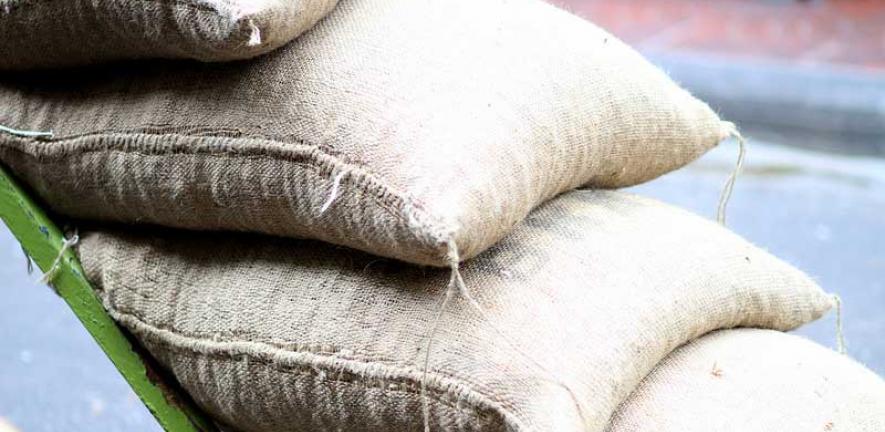
A book by Cambridge University geographer Dr Emma Mawdsley provides a major analysis of the ways in which the ‘rising powers’ of the BRICS and others are changing the development landscape.
A book by Cambridge University geographer Dr Emma Mawdsley provides a major analysis of the ways in which the ‘rising powers’ of the BRICS and others are changing the development landscape.
South-south aid and development cooperation have rarely made headlines
From Recipients to Donors (Zed Books, 2012), an analysis of changes in the aid world by Cambridge University geographer Dr Emma Mawdsley, starts with a key question: who gives foreign aid to whom? Not long ago this would have seemed easy to answer; the richer, industrialised, ‘developed’ countries in the north give aid to poorer ‘developing’ countries in the south. Dr Mawdsley shows that this picture is not, and has seldom been, entirely accurate.
Developing, socialist and Gulf countries have given financial and technical assistance to each other for decades, in some cases as long ago as the 1950s. At times this aid has been substantial (the Gulf States accounted for a third of global foreign aid by the late 1970s), and large numbers of countries were involved. In the past, countries like Vietnam prided themselves for the provision of expert advisors to other socialist countries, while Morocco continues to offer scholarships to West African students.
But south-south aid and development cooperation have rarely made headlines and most academic analyses of aid – whether from economics, anthropology, geography or political studies – have concentrated on evaluating and critiquing North-South aid. Whether they love it or loathe it, Western politicians and publics have overwhelmingly shared the same geographical imaginary of aid flowing from a rich North to a poor South.
The last few years have exposed and amplified a more complex landscape of foreign aid and development assistance. Indeed, From Recipients to Donors suggests that we are witnessing the implosion of the previously dominant aid regime, while what will emerge in its place is still very uncertain
This uncertainty stems in part from the financial crisis, which is putting pressure on western publics and politicians to justify aid budgets, while disquiet with the failures of aid to deal with persistent poverty in some parts of the world continues. The growth in the number and influence of foundations, channeling private philanthropy, has been welcomed by many, but this has also added to the fragmentation and lack of accountability of the aid system.
Perhaps the most striking development has been the new visibility and influence of the so-called ‘rising powers’. The BRICS (Brazil, Russia, India, China and South Africa) are usually mentioned here, but Dr Mawdsley argues that we also need to recognise the dynamism and involvement of many more countries who are giving loans, grants and technical assistance, including Chile, Indonesia, Poland, Thailand, Turkey, Venezuela and others.
From Recipients to Donors describes how we are entering a new era of development. The geographies of wealth and poverty are changing – from the crises in Greece and Spain, to the growing wealth and inequality of Asia. India is now helping bail out the Eurozone, while it continues to have higher rates of child malnutrition than sub-Saharan Africa.
This radically altered picture presents a serious conceptual and political dilemma for the World Bank, Department for International Development and other ‘traditional’ aid agencies. Development norms are also changing. Since the turn of the millennium the focus has been poverty reduction, and the western-dominated aid system has worked hard to address social issues of gender empowerment, health and education. Western agencies have also continued to intervene in recipient countries, rightly or wrongly attempting to shape their politics and policies.
The rising powers, on the other hand, assert a principled position of not interfering in the sovereign affairs of their partner countries (although in practice this is not always adhered to).
By and large, these new players have also driven a stronger focus on economic growth and productivity as the core engine of development, supporting infrastructure and investment in energy, agriculture, resource extraction and manufacturing. This new way of working for donors and recipients has been welcomed in many countries, but it raises serious concerns about social and environmental standards.
Similarly, south-south development cooperation tends not to work through the supposedly distinctive categories of ‘aid’, ‘trade’ and ‘investment’. Rather, these flows and relationships blend and blur, often very effectively in terms of leveraging growth and impact, but with implications for corruption and competition.
From Recipients to Donors provides a comprehensive analysis of the historical trajectories of non-traditional donors and development partners, and charts the huge rifts that have emerged in the last few years. It explains the current radical shifts in development thinking and practice, and looks at the challenges and opportunities the rising powers may present for poorer peoples and countries as the future unfolds.
This work is licensed under a Creative Commons Licence. If you use this content on your site please link back to this page.





